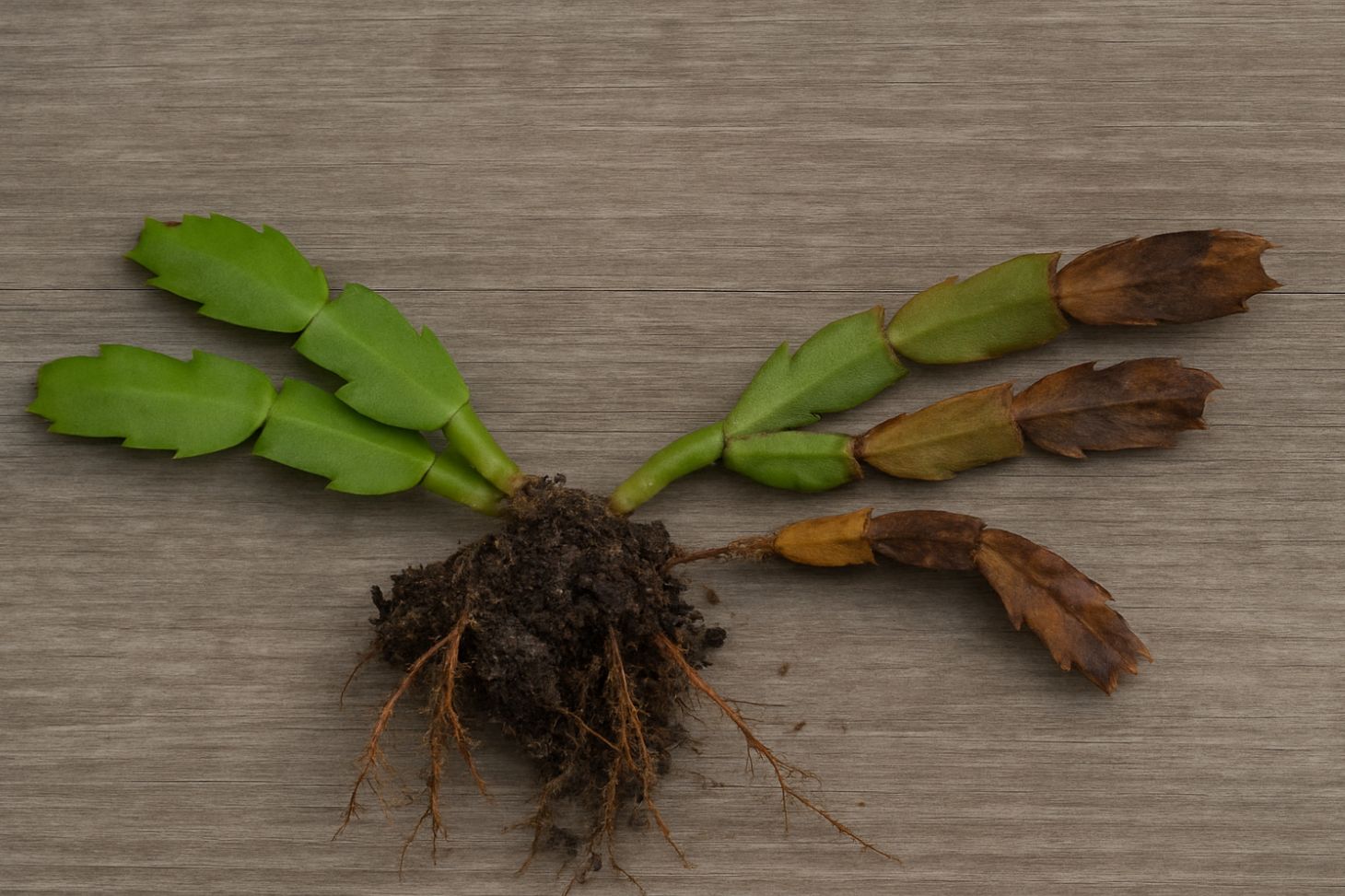Christmas Cactus Root Rot: Causes, Symptoms, and Effective Solutions
Root rot is one of the most common threats to a Christmas cactus, and if left untreated, it can quickly kill your plant. If you notice wilting leaves, sagging branches, black or brown spots, or soggy soil, your Christmas cactus may have root rot and needs urgent attention. Knowing the signs and what to do is the best way to save your plant.
Proper watering and well-draining soil are key to keeping your Christmas cactus healthy. When root rot starts, taking action as soon as possible gives your plant the best chance of recovery and future growth.
Key Takeaways
- Watch for wilting or brown spots as signs of root rot.
- Use loose, airy soil and water carefully to help prevent root problems.
- Early treatment is important to help save your Christmas cactus.
Understanding Root Rot in Christmas Cactus
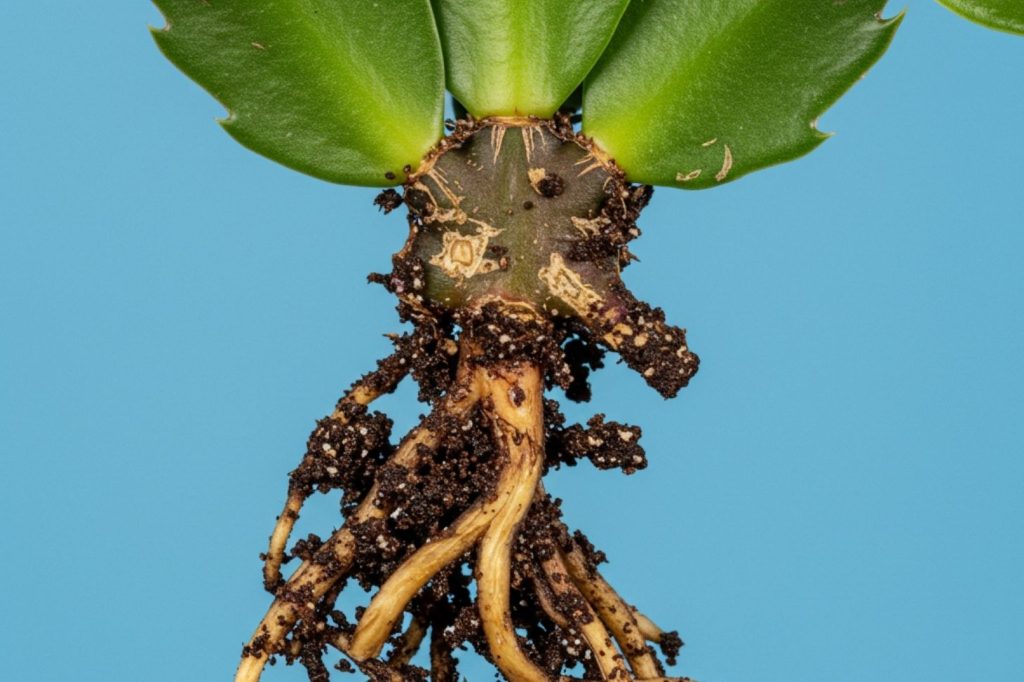
Root rot in Christmas cactus can quickly damage or even kill your plant if it is not handled early. Spotting the signs, knowing the main causes, and understanding how it differs from other problems will help you save your Schlumbergera.
Causes of Root Rot
The leading cause of root rot in Christmas cactus is overwatering. When the soil stays wet for too long, roots cannot breathe. This lack of air lets harmful fungi like Phytophthora and Pythium grow and attack the plant’s roots.
Planting your Schlumbergera in a pot without drainage can also trap too much moisture. Heavy, dense soil holds water and takes longer to dry out, making root rot more likely.
Cold or humid environments may slow evaporation, leaving roots in soggy soil. Using contaminated tools or old soil with leftover disease can also introduce fungal spores.
Keeping your Christmas cactus in the right soil, giving it drainage, and watering only when the top inch feels dry are the best ways to prevent root rot.
Identifying Symptoms
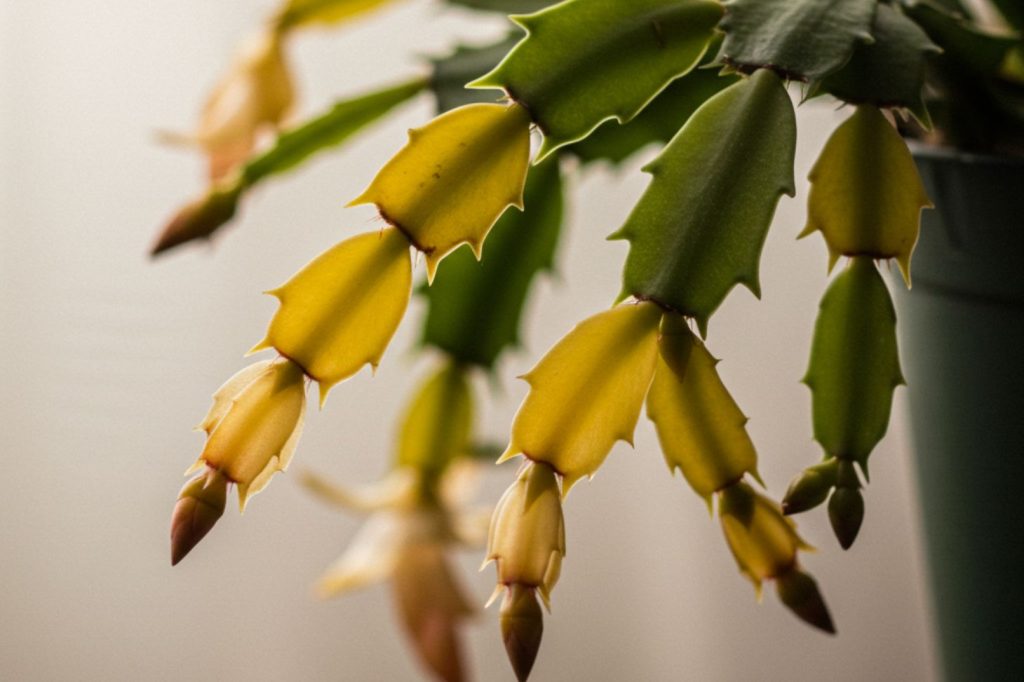
Signs of root rot start with the roots themselves. Healthy roots look white or light tan, while rotten roots appear black or brown and may feel mushy. If you notice a foul, sour odor when you check the roots, rot is a strong possibility.
Above the soil, your Christmas cactus might show wilting, drooping, and yellowing of stems and leaves. The plant can look limp even when the soil is wet. Sometimes you’ll see brown or black spots on the stem near the base, and leaves may become soft or fall off easily.
If you lift the plant out and the roots break apart, this is often a clear sign of severe root rot. Remember, catching root rot early gives your Schlumbergera a better chance to recover.
How Root Rot Differs from Other Plant Diseases
Root rot is caused mostly by fungal pathogens in wet, poor-draining soil. Unlike some other plant diseases that show spots or mildew on leaves first, root rot works from below the soil surface and attacks the roots first.
Stem rot might look similar but usually starts above ground and causes stems to turn mushy and dark from the top down. Fungal growth such as powdery mildew appears as a white, powdery coating on leaves, which is not seen in root rot.
Bacterial diseases may make leaves smell rotten or slimy but often do not start with the roots. With root rot, your plant will often show wilting and root discoloration without wide leaf spotting or powder. Knowing these differences helps avoid misdiagnosis and wrong treatments.
Prevention and Proper Care Strategies
To keep your Christmas cactus healthy and free from root rot, you need to balance watering, soil conditions, light, and air moisture. Following proven care routines makes it easier to prevent common problems for this houseplant.
Watering Techniques
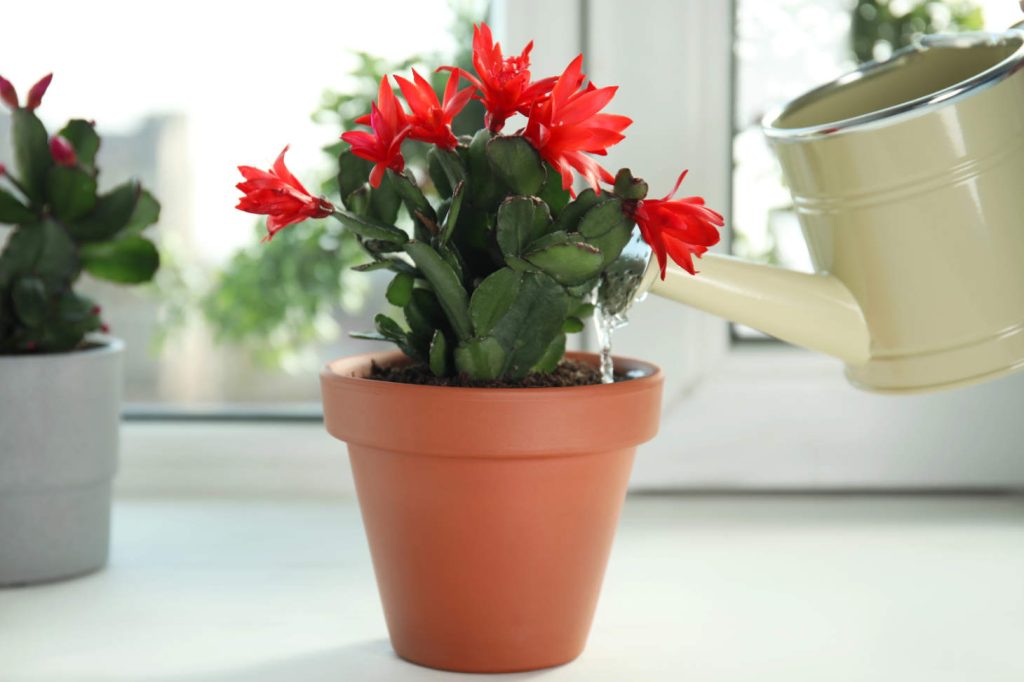
Water your Christmas cactus when the top inch of soil feels dry to the touch. Use room-temperature water, pouring until excess drains out the bottom of the pot.
Do not let the plant sit in standing water. Always empty saucers after watering. Christmas cacti do not tolerate drought for long periods, but they are also sensitive to excessive moisture.
It is better to underwater slightly than to overwater. Always check soil moisture with your finger before adding more water. Water less often in cooler months or if the plant is in total darkness for a while.
Optimal Soil and Drainage
Use a well-draining soil mix made for succulents or cacti. These mixes allow water to pass through quickly, which keeps roots from sitting in moisture.
A good mix might be:
| Ingredient | Ratio |
|---|---|
| Coco (or peat moss) | 2 parts |
| Potting soil | 1 part |
| Coarse sand, perlite, or vermiculite | 1 part |
Choose a pot with drainage holes. This prevents excess water from collecting at the bottom and lowers the risk of root rot. Repot your cactus every few years to refresh soil and inspect for damaged roots.
Managing Light and Temperature
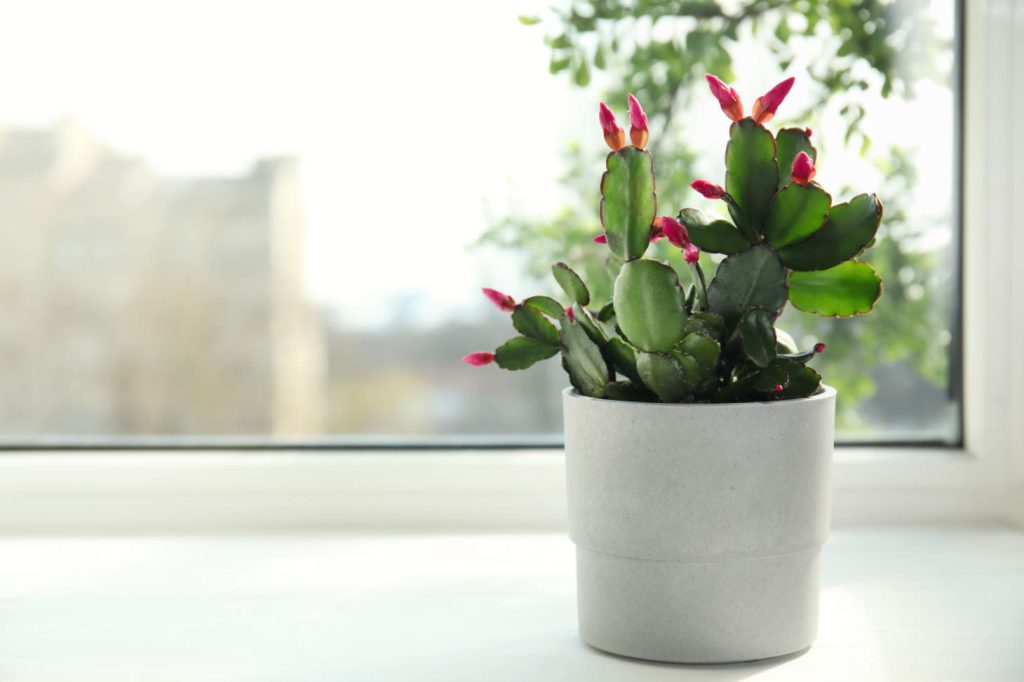
Place your Christmas cactus in bright, indirect light. Direct sun can burn its leaves, while too little light can stunt growth.
Aim for daily temperatures between 60°F and 70°F during the day. Avoid spots near cold drafts, heaters, or air conditioners.
Keep your plant away from total darkness. It needs some light each day, especially in winter, to support healthy growth. Stable temperatures and gentle light will keep the plant stress-free.
Humidity and Moisture Control
Christmas cacti prefer moderate humidity, about 50–60%. If air in your home is very dry, like in winter, set a humidifier nearby or place the pot on a tray with pebbles and water.
Avoid misting the leaves directly, as this can lead to fungal issues. Check both air dryness and soil moisture.
If your home is humid, monitor the soil closely. High humidity keeps the soil wet longer, increasing the risk of excessive moisture around the roots. Adjust your watering schedule as needed to avoid root rot.
Treating Christmas Cactus Root Rot
To help a Christmas cactus recover from root rot, you must act quickly and use the right steps. Common solutions include repotting, applying fungicides, and pruning unhealthy roots.
Repotting and Saving Affected Plants
If your Christmas cactus shows signs of root rot, remove it from its pot as soon as possible. Gently shake off loose soil, and rinse the roots with lukewarm water. Use care with older plants, as their roots can be fragile.
Pick a new pot with drainage holes, and use fresh, well-draining cactus or succulent soil. Do not reuse the old soil or pot, as these could hold disease.
Place the cactus back into the pot and fill in around the roots with fresh soil. Water lightly after repotting. Avoid overwatering until you see healthy new growth. Make sure the pot is placed in a spot with bright, indirect light.
Using Fungicides Effectively
Fungicides can help reduce fungal pathogens that cause root rot, such as Fusarium and Pythium. Systemic fungicides may be most helpful because they move through plant tissues, offering better protection. Choose a fungicide labeled safe for houseplants or cacti.
Mix the fungicide according to the product’s instructions. Apply it to the roots and lower stems after pruning and before placing the cactus in its new soil. Only use fungicides as directed and do not overuse, as this can harm the plant.
Homemade sprays are not recommended unless you are sure they’re safe for cacti. For severe infections that keep returning, it may be necessary to treat the soil with fungicide before reusing or composting.
Pruning and Removing Infected Roots
Examine the roots after taking the plant out of the old pot. Healthy roots are firm,white or light tan. Rotted roots appear black, brown, mushy, or have a foul odor. Always use sharp, clean scissors or garden shears to trim away all infected and dead roots.
Cut back to healthy tissue. Leave only firm, white, and living roots attached to the plant. Disinfect your tools between cuts to avoid spreading disease. Dispose of all infected plant material and soil in the trash, not the compost bin.
Check the stem base as well to ensure no rot has spread there. Removing all soft, dark, or smelly tissue increases your plant’s chance of recovering. After pruning, let roots dry for a few hours before replanting to discourage further infection.

